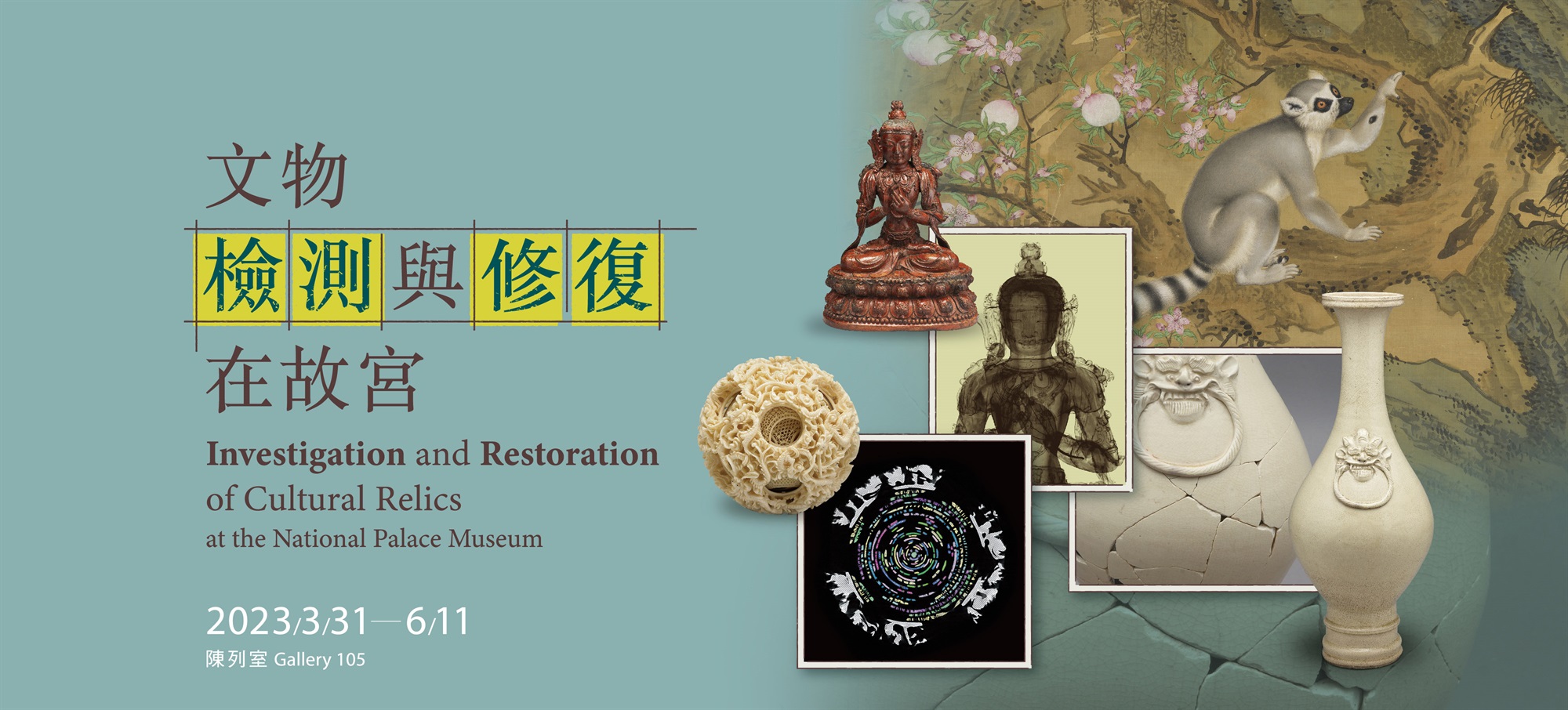Introduction
Scientific Analysis of Antiquities
In recent years, the scientific analysis and study of precious objects has played an indispensable role in the National Palace Museum’s preventive conservation, restoration, exhibitions, acquisitions, and research of the history of arts and crafts. It has also proven very instructive in solving many questions, such as the techniques used in crafting Tibetan dragon sutras and the mirror cases for the Xiqing Xujian. Likewise, it has shed new light on the internal structures and production techniques of ivory balls, revolving vases, and bronzes, and it has helped identify the materials used in paintings, porcelain, jade objects and gemstones.
In this section, four precious objects are on display: an Ivory ball, a Revolving vase with swimming fish, a Square gui food container with Ya Chou emblem, and a Hollow dry lacquer statue of Bodhisattva. We also present their X-ray or tomography images, allowing visitors to see with their own eyes the secret, invisible insides of these precious objects, and come to know these legends that lay unrevealed in the past. We have also prepared an interactive multimedia presentation, introducing the National Palace Museum’s recent achievements combining technology and the humanities, using modern analytical techniques to assist in the study of antiquities.
Restoration of Porcelain
In general, porcelain objects are not prone to chemical or biological deterioration, but they are quite susceptible to physical damage. This leads to chipping and fragmentation. Porcelain restoration aims to ensure the objects can be stored, displayed and handled, presenting their historical value.
Five porcelain objects are on display in this exhibition, most of them royal heirlooms of the Qing dynasty. They possess not only a wealth of historical significance, but also considerable aesthetic value. Therefore, conservators must understand the techniques involved in firing porcelain, as well as the structure and composition of both the glazes and the bodies. In this example, invisible restoration methods are employed; afterward, the distinctive glazed surfaces of the porcelain vessels are reproduced with professional restoration techniques and materials, so that they exhibit their rightful artistic value and aesthetic qualities.
Restoration of Calligraphy and Paintings
The history of mounting calligraphy and painting in China goes back more than 1,500 years. As early as the Tang dynasty, the artist Zhang Yanyuan (815-907) in his Lidai Minghua Ji (“Famous Paintings from History”) noted various methods of repairing calligraphy and paintings. In his History of Painting, the Song-dynasty literati Mi Fu (1051-1107) wrote, “If an old painting is not damaged, it does not need to be mounted.” Zhou Jiazhou (1582-1658) of the Ming dynasty wrote that when a painting is damaged, holes “must not be filled in too much.” These methods and principles have deeply influenced the restoration of calligraphy and paintings in the Ming and Qing dynasties and the modern era. Meanwhile, since the 20th century, museums have adopted a new set of standard criteria for restoring cultural objects: minimal intervention, reversibility, and discernibility. Some of these criteria correspond with traditional restoration and mounting techniques for calligraphy and painting, while others differ considerably.
The two silk paintings on display in this exhibition not only show the affects of natural aging, but parts have also been harmed by the treatment of the paintings’ materials and previous mounting and repair methods. Due to this deterioration, the paintings needed to be removed from their frames and undergo either partial or complete restoration. To retain the most original mounting materials and art history information, the museum chose to fill in holes and retouch pigments according to the restoration principles of minimal intervention, reversible materials, and moderate discernibility, with the aim of achieving a state of “even thickness, cleanliness and smoothness” after the paintings are remounted.

